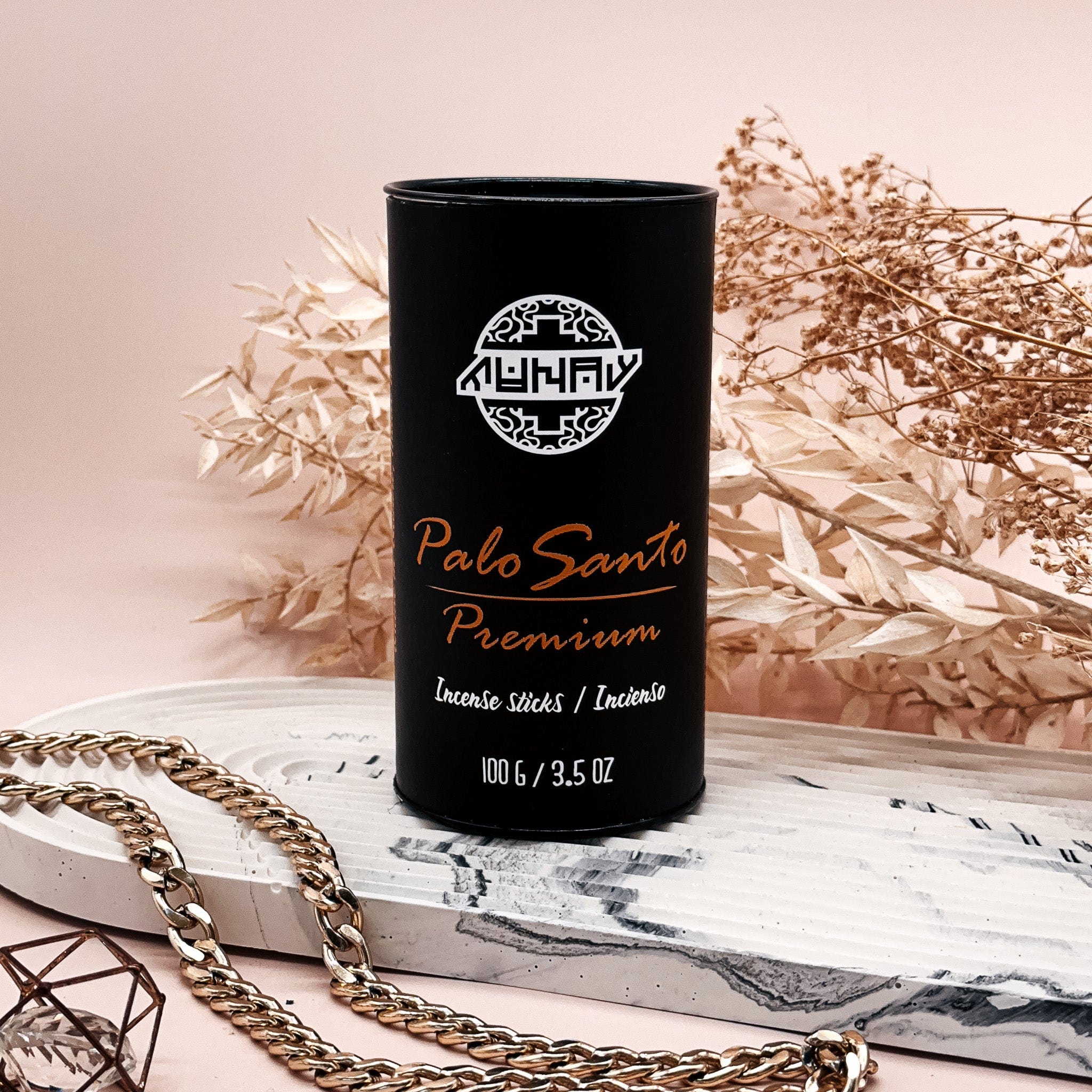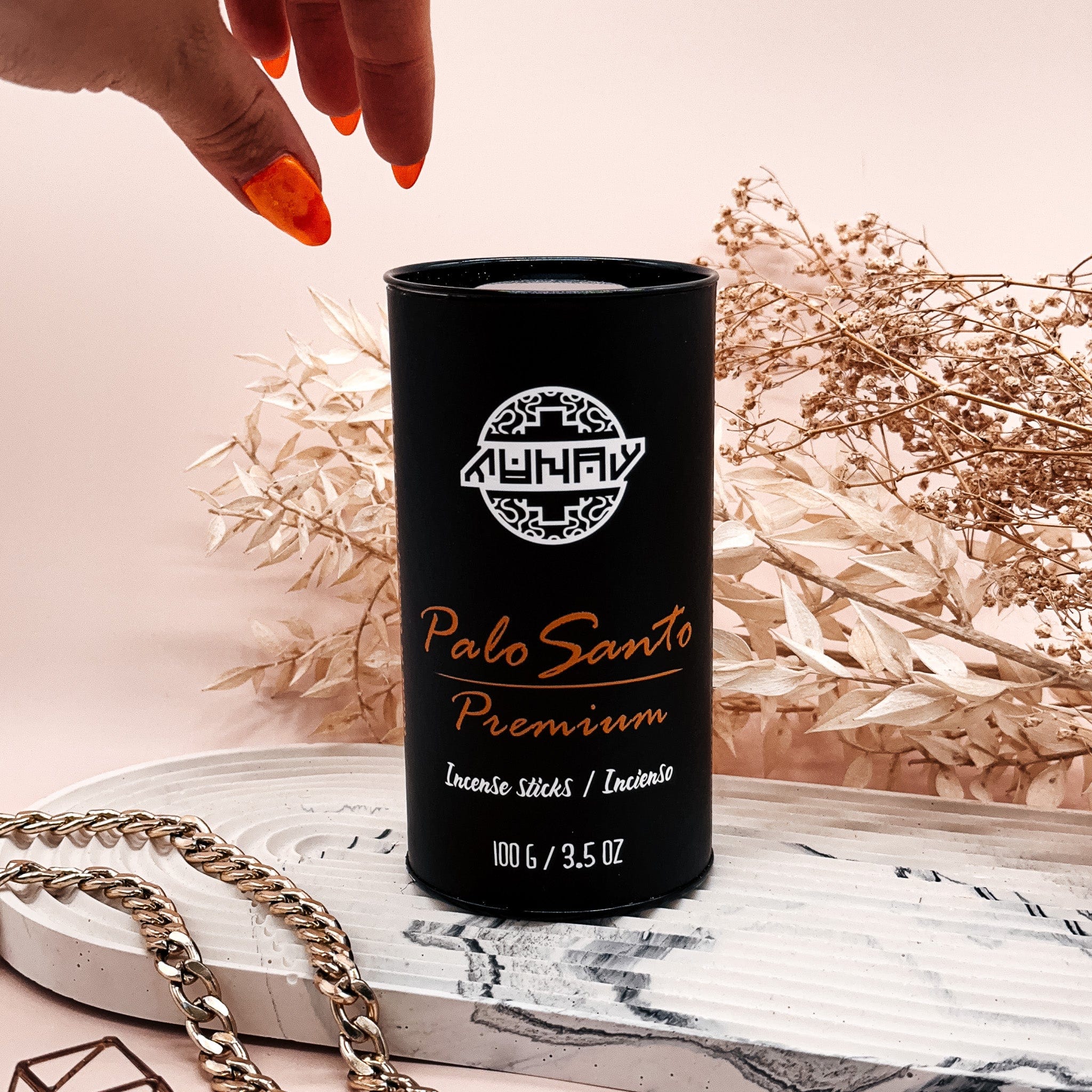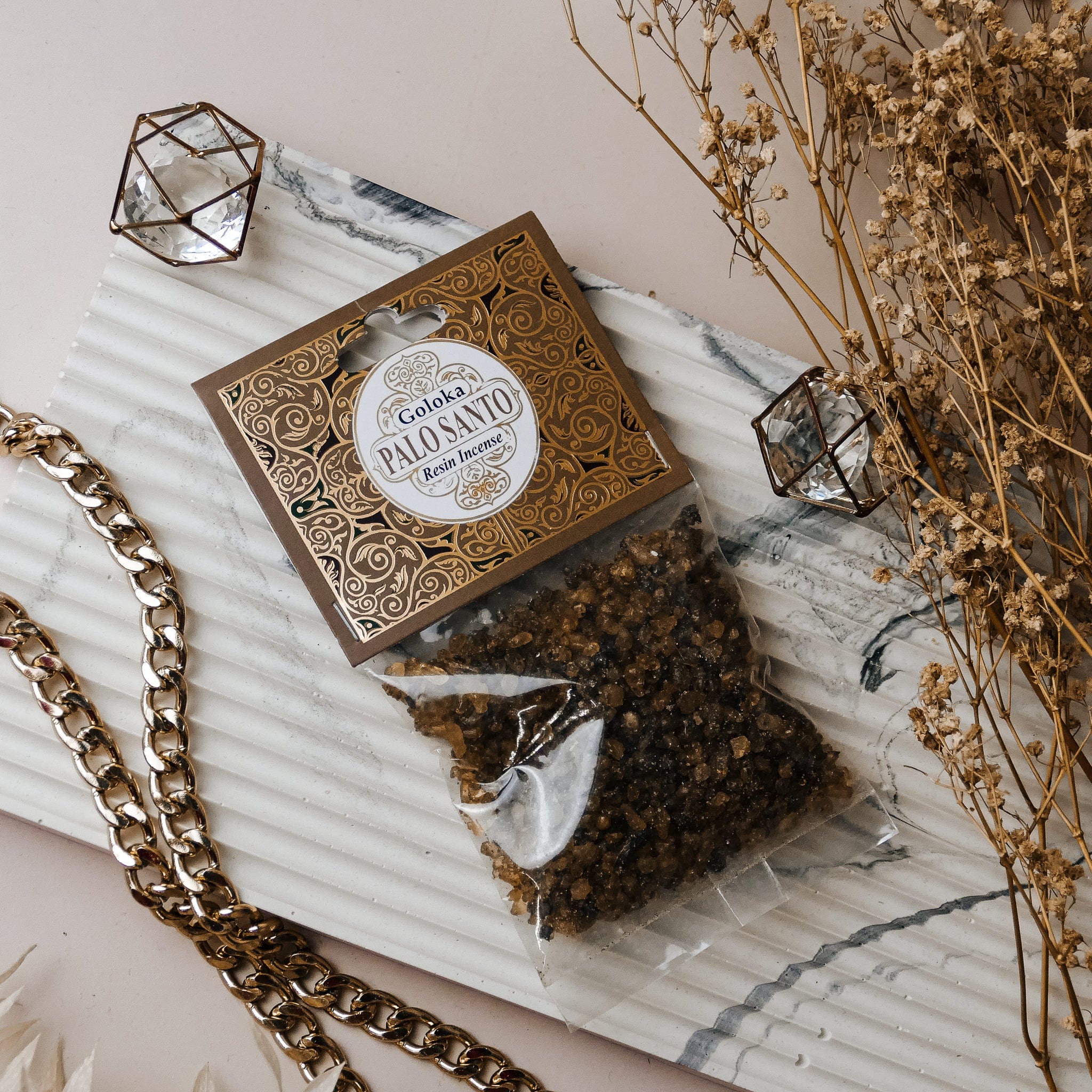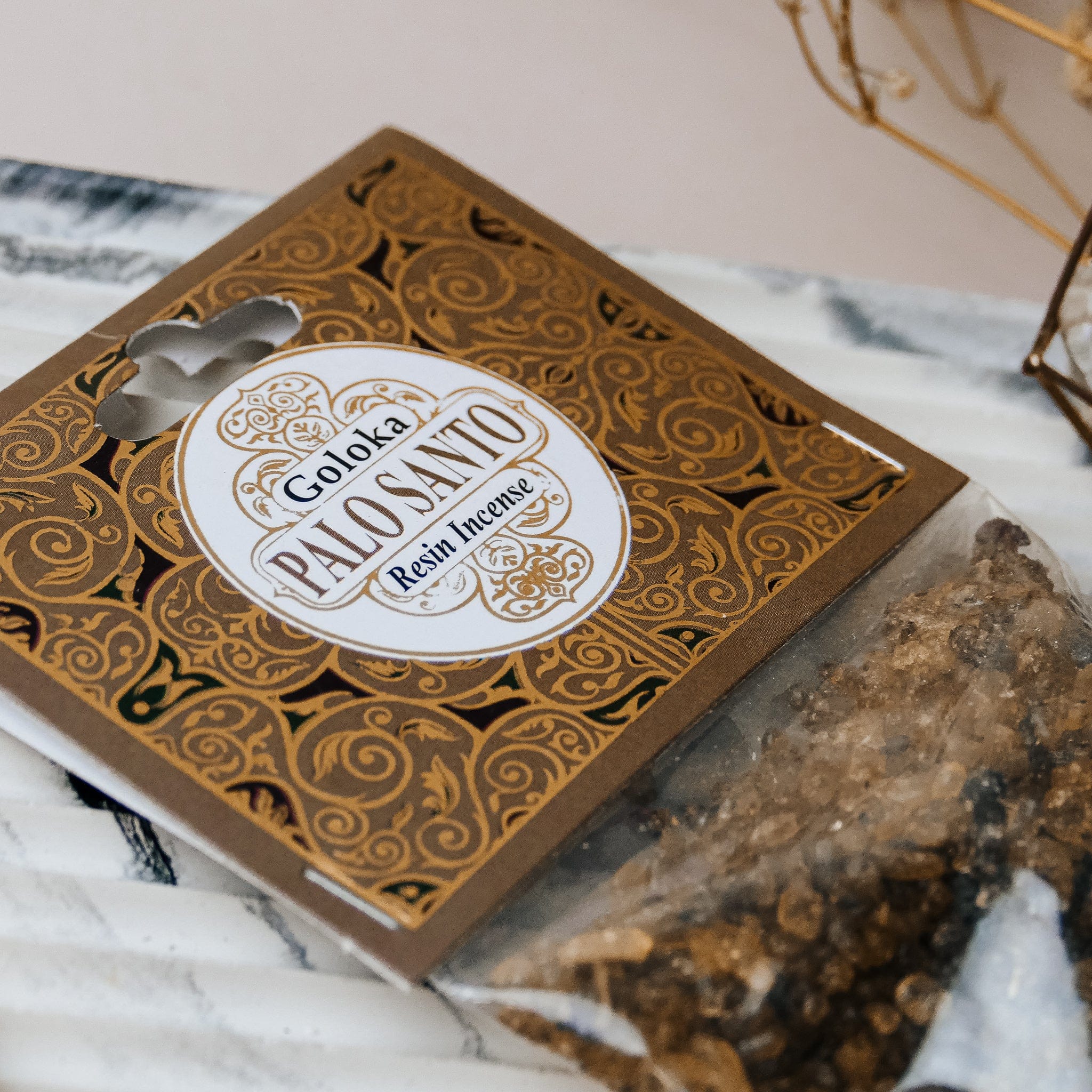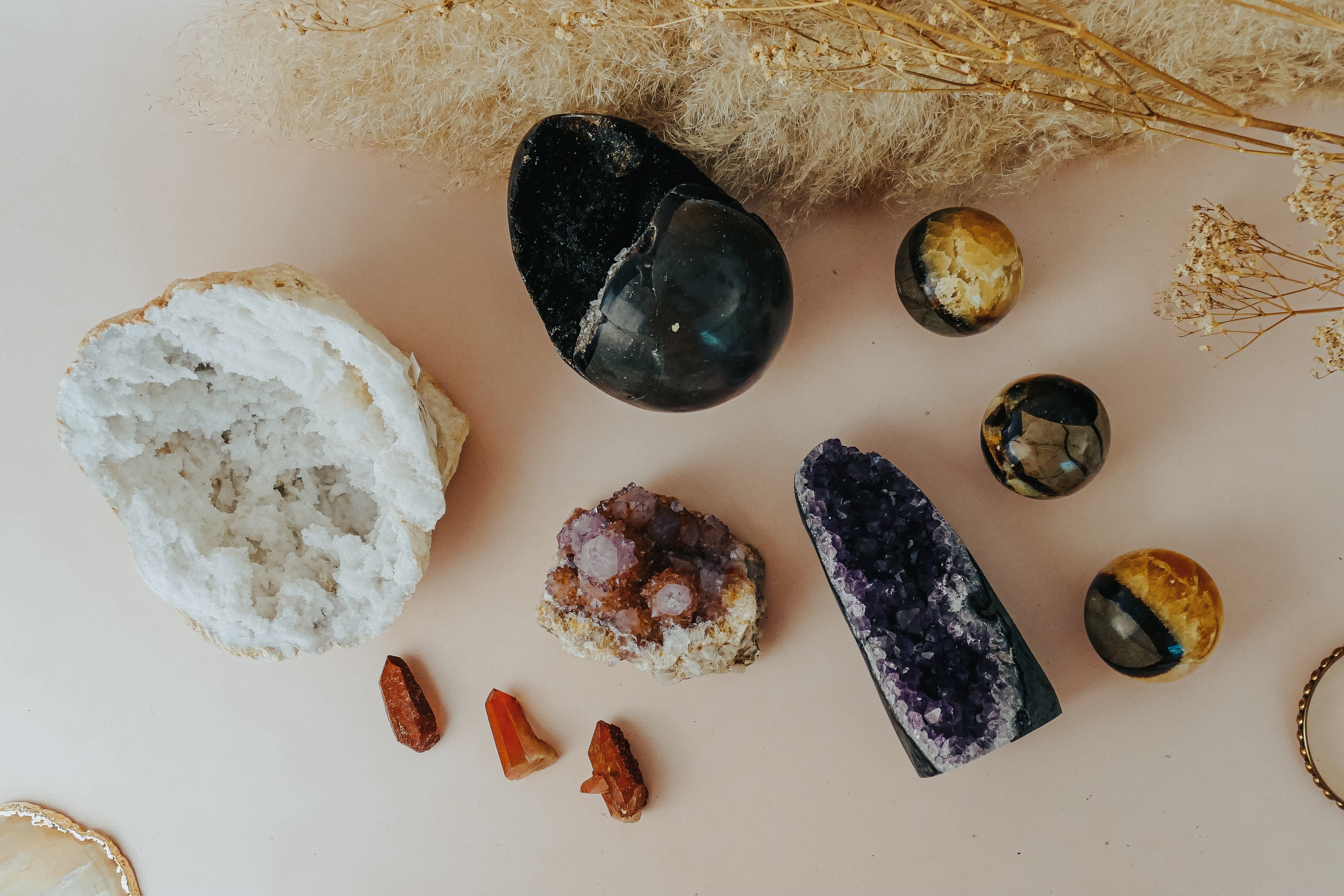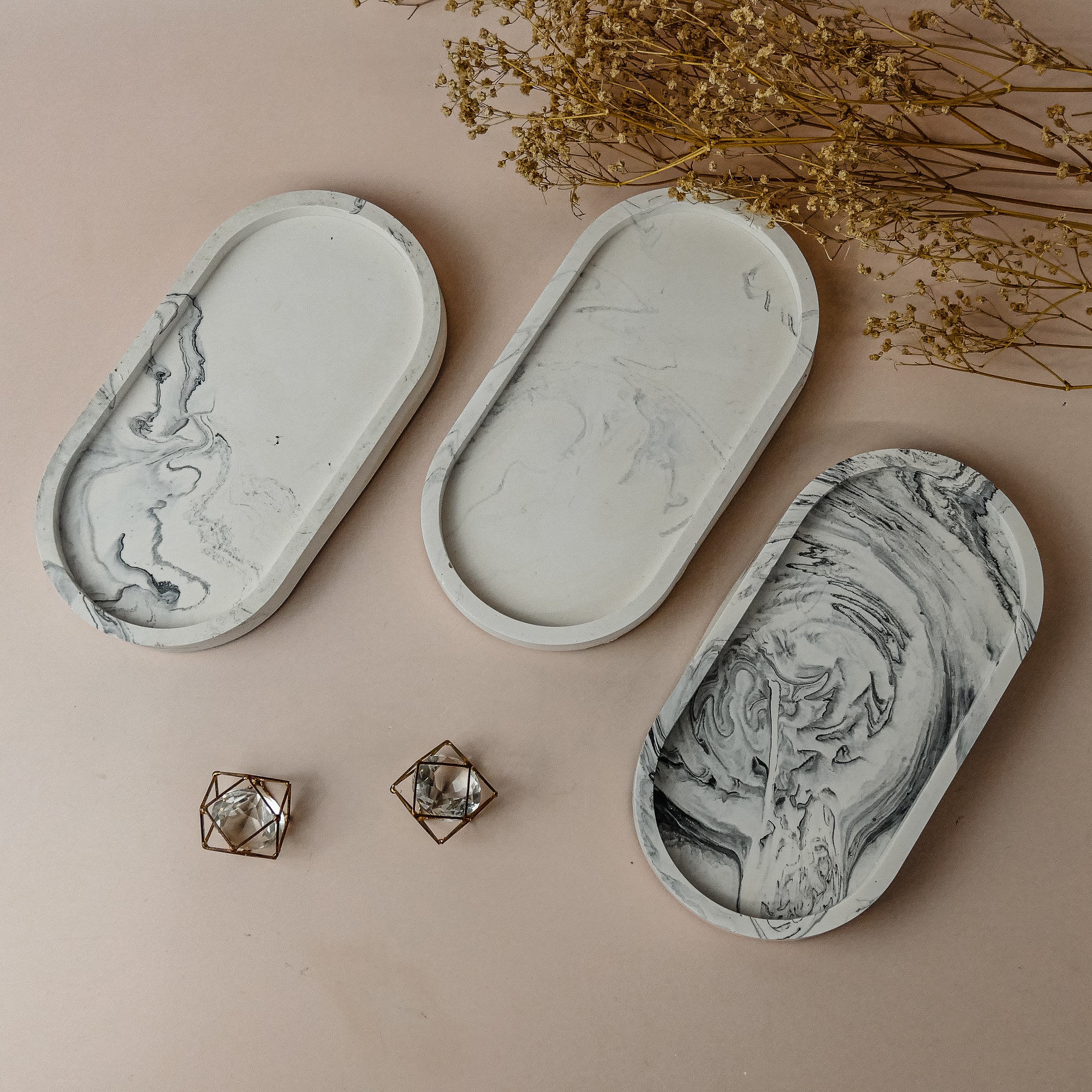
Magical wood
WHAT'S PALO SANTO?
Palo Santo, or "holy wood," originates from South America, where it has been used for thousands of years. This sacred wood cleanses your home of negative energy and stress while inviting positive energy and creativity into it. Discovering the magical properties of Palo Santo helps us connect with these ancient traditions and improve the harmony and well-being of our homes. Why not explore the benefits of Palo Santo for yourself?

TRAVELING BACK IN TIME
HISTORY OF PALO SANTO
Under the name "Palo Santo", we know the wood of the Bursera graveolens tree, which originates from South America.
Today, this special wood is used during meditation, relaxation rituals, and to attract positive energy. When a stick of Palo Santo is lit and then extinguished, the smoldering wood emits a distinctive and enchanting scent that is hard to describe. Some say it smells gently of a lemon mixed with baked apple, while others are reminded of burnt, caramelized sugar. Universally, it's a scent that few people can resist.
Although Palo Santo has become extremely popular only in recent years, its story dates back to the time of the Incas. The indigenous people recognized the miraculous power of Palo Santo, using it in spiritual ceremonies as well as for medicinal purposes.
During the Incan era, aromatic oil was also extracted from Palo Santo. This oil was used for relaxation, applied to the nape of the neck or along the spine, and for energy purification of individuals.
Aromatic oil was also obtained from Palo Santo during the Inca era, which was used both for relaxation (it was smeared on the back of the head or along the spine) and for the energetic purification of the person to whom it was applied.
Today, this holy wood, as it is called worldwide, is still used by shamans in Peru. They light the wood, wafting the smoke around those seeking healing, cleansing the patient's energetic space, and removing all misfortune, negative thought patterns, and evil spirits.

In South America, Palo Santo is also used in the form of tea or a water infusion, particularly in Ayahuasca rituals. Shamans soak Palo Santo wood in water and offer this infusion to everyone participating in the ritual, as it is believed that cleansing the body and spirit of negative energy is necessary beforehand.
The use of this incense quickly became popular in Ecuador as well. Even today, people there continue the tradition of burning Palo Santo, believing that the smoke helps rid their surroundings of negative energy, known as "mala energía."
One Ecuadorian proverb even speaks of the remarkable power of Palo Santo:
"Palo santo para limpiar tu casa de la mala energía, palo santo para la buena suerte."
Translated, this means:
"Palo Santo to cleanse your home of negative energy, Palo Santo for good luck."
HIGH QUALITY PALO SANTO
PALO SANTO from PERU
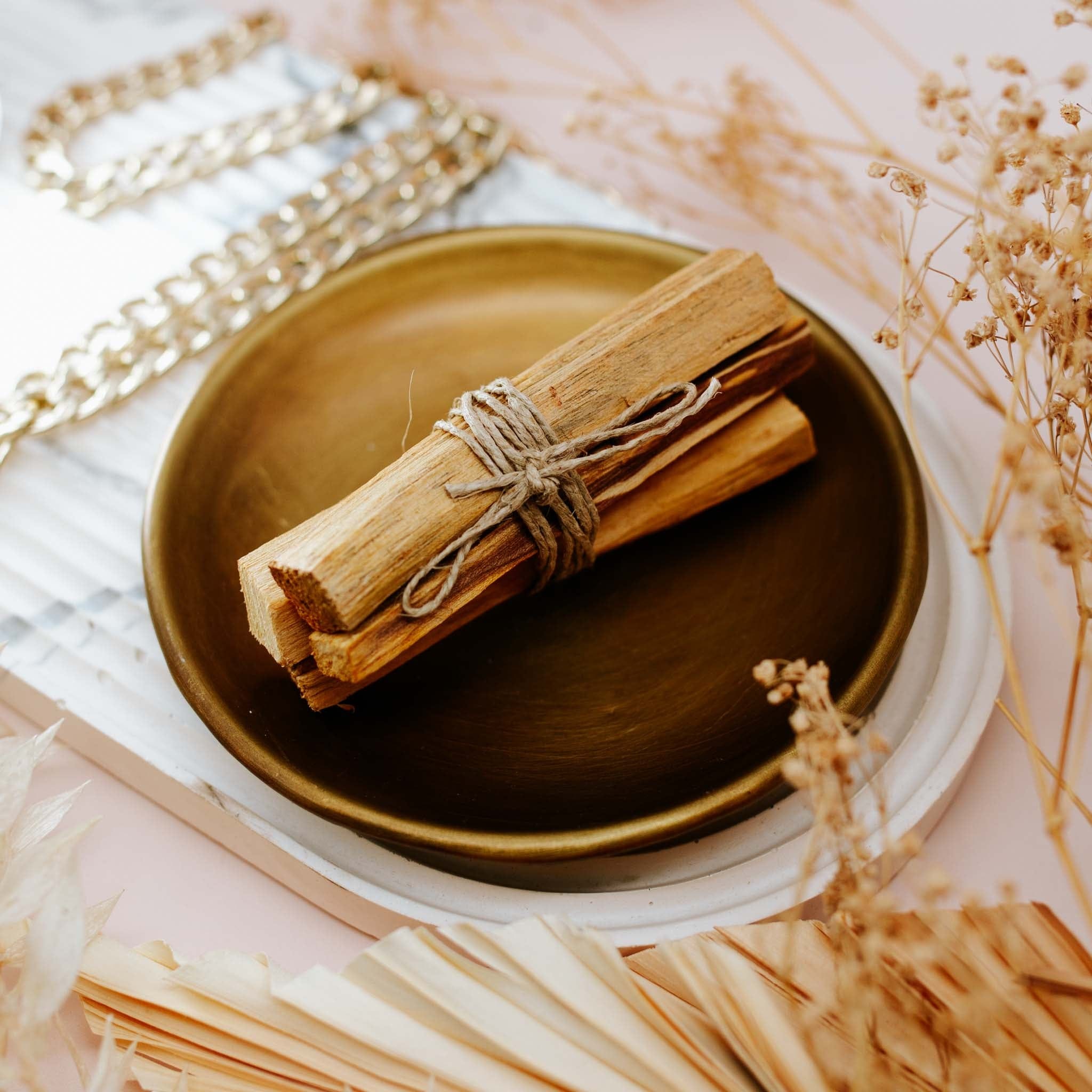


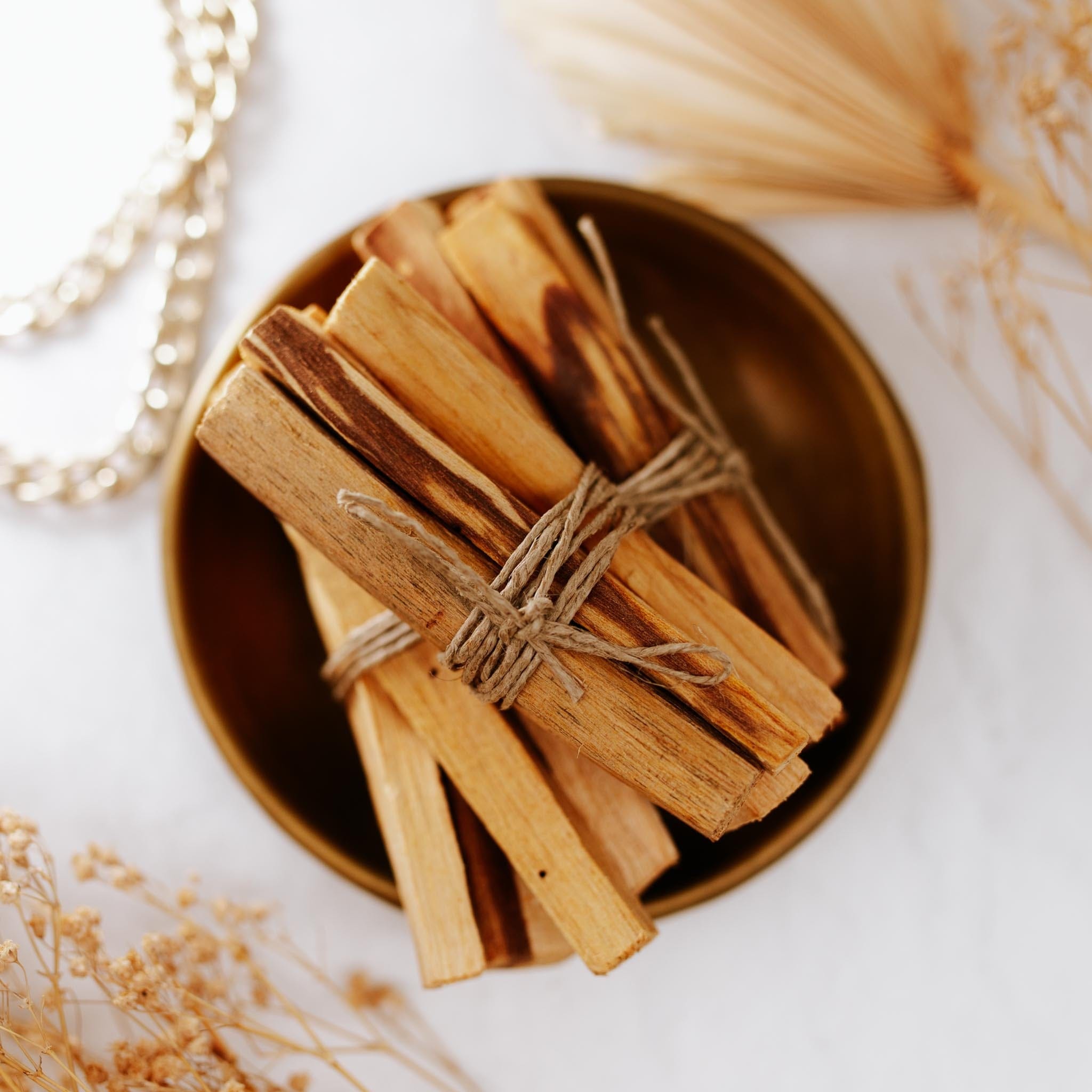
3x Palo Santo
3x Palo Santo
Your Soul Time Skladišče
40 Litostrojska Cesta
1000 Ljubljana
Slovenia

How is Palo Santo grown?
Bursera graveolens is a wild tree native to regions of Peru and Venezuela. It thrives in dry, tropical areas across Mexico, Peru, Guatemala, Ecuador, and many other regions.
However, the journey from tree to the stick of Palo Santo you can burn at home is not straightforward.
For the wood to develop its distinctive aroma, the tree must grow and die naturally, a process that can take between 50 to 70 years. If the tree is cut down prematurely, it won't develop the strong fragrance that Palo Santo is known for.
Even after the tree naturally dies and falls, it can't just be picked up, cut, and sent around the world. The tree needs to lie on the ground for at least five to eight years. This time is crucial for the essential oils within the tree to mature fully. Without this maturation process, the wood cannot become the high-quality incense that we know today.

THE PROBLEM OF HARVESTING PALO SANTO
The Palo Santo tree, or Bursera graveolens, is not considered an endangered species. Since 2010, it has been classified as a "stable" species. However, this doesn't mean we can treat these trees irresponsibly.
The growing demand for Palo Santo has led to two major issues:
Some individuals illegally cut down trees and sell the wood on the market.
Synthetic versions of Palo Santo wood have appeared, enriching corporations while leaving users disappointed.
Because of these problems, it is crucial for consumers to find trustworthy vendors who sell authentic, sustainably sourced Palo Santo wood. Only by purchasing from such sources can we ensure we receive high-quality incense and avoid supporting questionable sellers who may be exploiting natural resources irresponsibly.

HEALING PROPERTIES OF PALO SANTO WOOD
Now that you know what to look for when buying Palo Santo wood, let's talk about its healing properties.
The distinctive aroma of Palo Santo comes from a special compound called limonene, which is abundant in the tree's essential oil. Limonene is known for its numerous healing effects on both body and mind. This essential oil is antibacterial, anti-inflammatory, and antiseptic, which is why it remains highly popular among healers worldwide.
Limonene is also highly effective in combating stress, making Palo Santo a central component in natural relaxation practices. People often use it during meditation, yoga, or daily relaxation routines.
In addition to these benefits, Palo Santo is known for repelling mosquitoes and other insects, making it a popular choice for summer evenings spent outdoors. Not only does it bring good energy to social gatherings, but it also effectively keeps mosquitoes at bay.
The long history of Palo Santo use attests to other metaphysical benefits of this wonderful gift from nature. When used regularly, the wood is said to:
- Enhance creativity,
- Attract positive energy,
- Remove negative energy from the environment,
- Improve concentration,
- Create a stronger connection with our true selves.
Using Palo Santo is not complicated
How to use Palo Santo?
Želite li iznenaditi prijatelja? Za vas smo pripremili nešto posebno.
Palo Santo Za prijatelja

Palo Santo za prijatelja
Palo Santo za prijatelja
Your Soul Time Skladišče
40 Litostrojska Cesta
1000 Ljubljana
Slovenia

